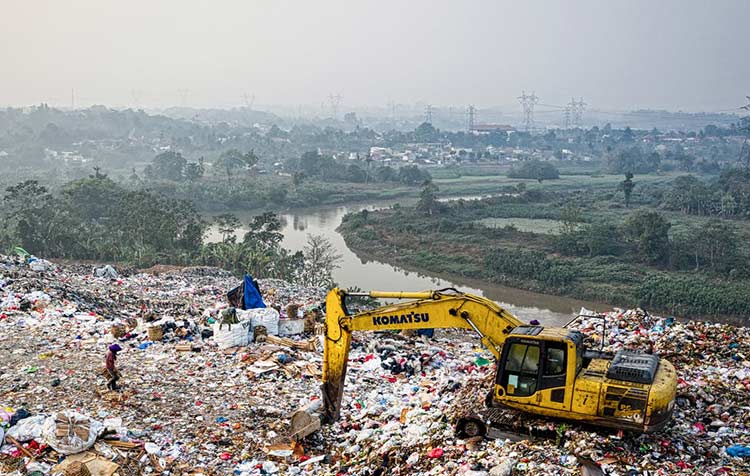What is meant by the externalization of environmental costs? Whether in business or in our private lives, our behavior has consequences. For example, when we take a plane on vacation to the other side of the world, that flight costs far more than just the ticket price. A single flight from Berlin to New York alone blows about 1 ton of CO2 per person into the atmosphere₁, reducing the climate change and the financial cost of stopping it continues to rise. However, such external additional costs are normally borne neither by us personally, nor by the airline - but by other people, animals and the entire planet. For me, these consequential costs for the environment and society are the driving reason, why we should all live sustainably.
In this article I want to give you everything you need to know about the externalization of environmental costs. From the definition, to the different types and the consequences, to internalization as a solution to this problem.
Here is in advance a short Overview about the article:
What is meant by the externalization of environmental costs?
Externalized costs are Costs incurred by producers and consumers but borne by society as a whole. Individual organizations or persons thus achieve higher profits or an increased quality of life at the expense of other people and entities. This selfish action is rewarded and encouraged by our current economic and financial system, even though there are environmental Health and material damage, Damage to ecosystems, Crop failures₂ and many other consequences for society as a whole.
The 3 types of externalization of environmental costs

Environmental costs can basically be externalized in different ways. Here, I would like to give you a clearer picture of the extent to which companies and consumers are currently profiting at the expense of the environment and other people, although they are often within the bounds of what is permissible.
1. externalization at the expense of the taxpayer
The taxpayer bears the consequential costs incurred by another person in a project or by a company in the production of a product.
Example from the entrepreneur's point of view: A factory discharges toxic wastewater into an adjacent river instead of disposing of it properly. The cost of cleaning and processing it into drinking water, for example, is borne by the local waterworks. Apart from this, the fish, as well as the yield of fisheries, also suffer from the contamination.
Example from the consumer's point of view: A private person washes his/her car independently with inexpensive, chemical cleaning agents that end up in the groundwater. The groundwater contaminated with the pollutants has to be cleaned by the municipality in a cost-intensive public contract over a longer period of time.
2. externalization at the expense of other countries
Other countries must bear the costs that another person or company has caused through their own actions.
Example from the entrepreneur's point of view: A waste disposal company sells a large part of the plastic waste it produces to a disposal company in Malaysia with less technical equipment. There, only a fraction can be recycled - a large part is dumped in nature in Pakistan. The costs are at the expense of ecosystems, groundwater quality and the health of local people, for example.
Example from the consumer's point of view: A tourist leaves his/her trash on the beach and refrains from disposing of it himself/herself. The costs are borne by the ecosystems, but also by the local people who depend on functioning tourism and clean beaches.
3. externalization at the expense of other generations
Private or entrepreneurial activities are carried out in such a way that the consequential costs for society as a whole are often incurred many years later.
Example from the entrepreneur's point of view: An agricultural company uses pesticides to save money on natural crop protection measures in the short term and to generate higher crop yields. The pesticide residues can only be detected in the groundwater many years later and have caused serious damage to human health to date. In addition, agricultural toxins are a major driver of species extinction - which in the long term also minimizes farmers' crop yields.
Example from the consumer's point of view: A meat lover eats 5 kilograms of beef in a few days. To produce one kilogram, for example, 25 kilograms of grain are needed as animal feed₃ as well as more than 15,000 liters of water₄. As a result, climate change is accelerating and the risk of water shortages is also increasing. The costs are borne by the children and grandchildren in the form of a significantly reduced quality of life in the future.
The Follows of the Externalization of Environmental Costs

All ecological problems of our time are basically a consequence of selfish and self-profitable behavior. Sometimes you just don't know any better. But whether it's damage to health, crop yields or the death of countless animals in a poisoned environment - it's all the same. Often these consequences for third parties are consciously accepted.
In 2016, for example, greenhouse gas emissions generated in Germany alone caused environmental costs of 164 billion euros₅ - costs that were incurred primarily due to air pollution, global warming and all its consequential damage.
Here I would like to list you some more examples that are a result of human actions and the externalization of environmental costs:
... to name just a few of the challenges facing humanity. In the detailed article about the Environmental problems of our timeI will present them to you once again in detail.
The internalization of ecological consequential costs as a solution
The Internalization of external effects is a fixed concept in economics and in this case means that the polluter of environmental damage also has to bear the direct and indirect environmental costs for it. With the help of internalization, a market failure is to be eliminated and a match found between private and macroeconomic profitability calculations (Pareto optimum).₆
As long as this economic incentive is lacking for companies and private individuals, the motivation to reduce one's own environmental impact is also lacking, at least from a financial perspective. Ecological and overall societal consequential costs must therefore be made comparable and measurable using scientifically recognized assessment methods in order to promote, for example, sustainable energy use or an environmentally friendly lifestyle. In this way, it is possible to quantify record how expensive neglected environmental protection actually is. The Federal Environment Agency shows how this can work with the Methodological convention 3.1 for the determination of environmental costs.
For environmental protection external costs must become internal
Compassion and respect for other people and living beings - these are the hallmarks of human behavior. But we humans naturally also strive for profit maximization and success. That is not reprehensible. However, it is reprehensible if we achieve this goal at the expense of the environment, the taxpayer and future generations. That is the opposite of environmental justice.
A change in thinking is imperative - the decisive incentive for this must be the internalization of the consequential costs of our own actions. However, each and every one of us must also do our part - we can't do it entirely without making sacrifices. We must be proud of what we do, but also of what we do not do.
Here are some final further articleswith which you yourself can become the solution to the problem:
- Minimize ecological footprint
- Start into vegan life
- Launch online petitions
- Sustainable living - tips & tricks
Do you have any questions or suggestions about externalizing environmental costs? As always, feel free to leave a comment below this post.
Stay sustainable,

PS.: Did you know that a vegan lifestyle also promotes human rights? Why this is so, you will now learn in the linked article!
References:
₁ myclimate foundation: Offset your flight emissions, available at https://t1p.de/1kku. [16.03.2021].
₂,₅ Umweltbundesamt: Gesellschaftliche Kosten von Umweltbelastungen(Stand: 17.01.2019), available at https://t1p.de/wgdi. [16.03.2021].
₃ Things Explained - In Brief: Meat - The World's Tastiest Evil, YouTube, Jan. 24, 2019, web, Mar. 16, 2021 at 08:50 AM, in: http://y2u.be/y6f3dwxexZM.
₄ Federal Environment Agency (2017): Hidden water (as of 22.03.2017), available at https://t1p.de/ddfg. [16.03.2021].
₆ Eberhard Feess, Gabler Wirtschaftslexikon: Internalisierung externer Effekte, available at https://t1p.de/1olk. [16.03.2021].






